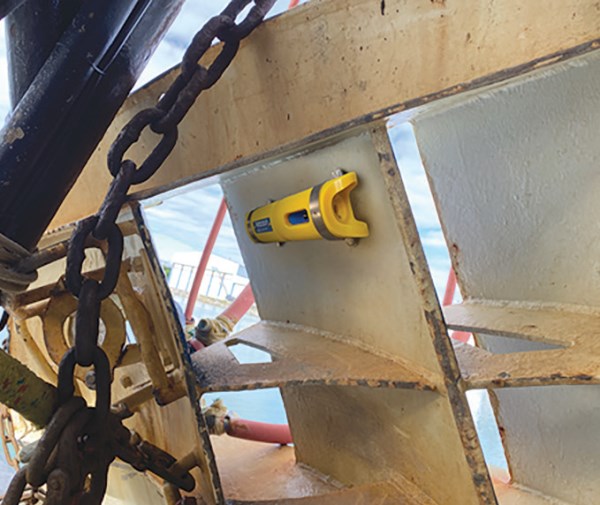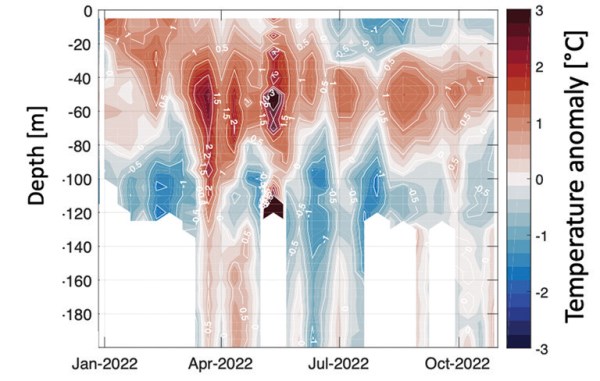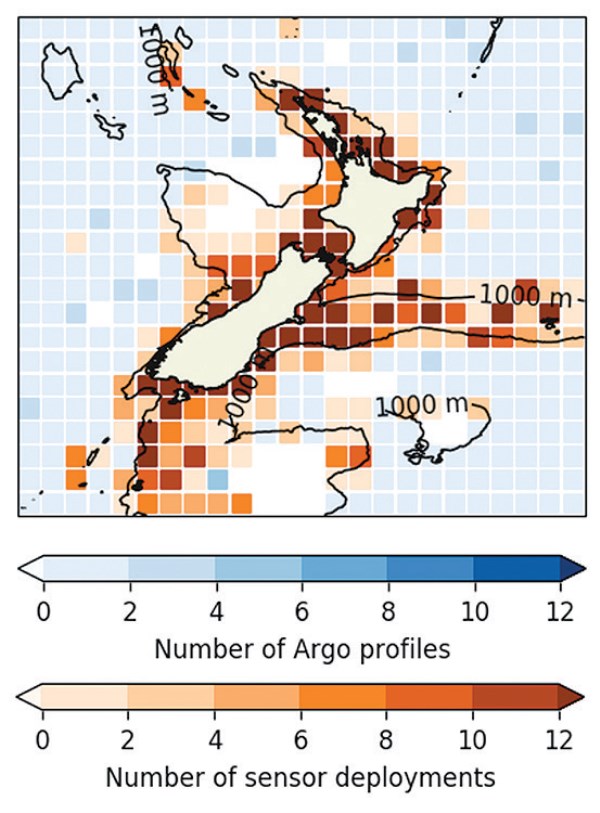
As part of the Moana Project, hundreds of commercial fishers around New Zealand are collecting vital temperature data from below the sea surface. The data help fishers make sense of their catch and helps scientists understand our oceans.
Dr Julie Jakoboski from the MetService who leads the sensor programme says: “Thanks to commercial fishers, we have a window into ocean temperature below the surface that we’ve never had before. Since the sensor programme started, ocean temperatures around New Zealand have been abnormally high. Thanks to fishers, we now understand what is going on beneath the surface.
The data collected by fishers show that temperature at depth can be very different from those at the sea surface,” she continues. “For example, we recently analysed sensor data from the Bay of Plenty and found that temperatures at around 60m depth were much warmer than the average, even when sea surface temperatures were normal.”

New Zealand gets ocean temperature data from an international programme using drifting sensors called Argo. However, these drifters are meant for deep water and don’t enter our coastal seas, the area most important to our blue economy.
“Fishers operate in exactly the area where we don’t get data from international monitoring programmes,” explains Julie. “Altogether, through the sensor programme, fishers have collected an astounding 16 million temperature observations from the coastal and shelf seas. This data provides a vital window into what is going on in our coastal environment, where most fishing, aquaculture and tourism is based.”
The last few years, New Zealand marine heatwaves have broken all records, which has significantly affected aquaculture and other marine life, causing dieback of bull kelp, sponge bleaching, and impacts on seabirds and marine mammals.

The impacts of warmer than average ocean temperatures are not just felt at sea. Warmer oceans can help fuel ex-tropical cyclones in New Zealand waters, potentially causing more intense rainfall like what we experienced in Gabrielle.
Julie continues: “The sensor programme is funded until 31 March 2024, but we are currently seeking funding to keep the programme running. Ocean data is super valuable and thanks to commercial fishers, New Zealand is leading the world when it comes to coastal temperature data.”

Have you noticed something that you think is caused by higherthan-average ocean temperatures? Fishers are close to the ocean, and we are looking for firsthand reports on potential impacts of warming of New Zealand’s ocean.
Call Malene on 021 298 0898 or email malene. [email protected]












